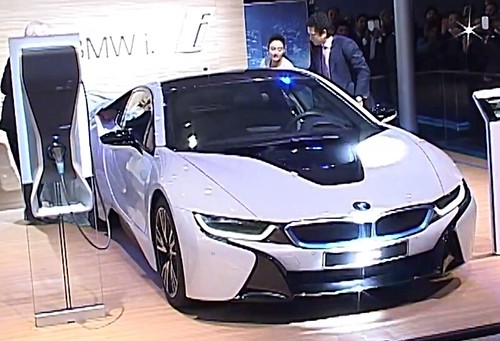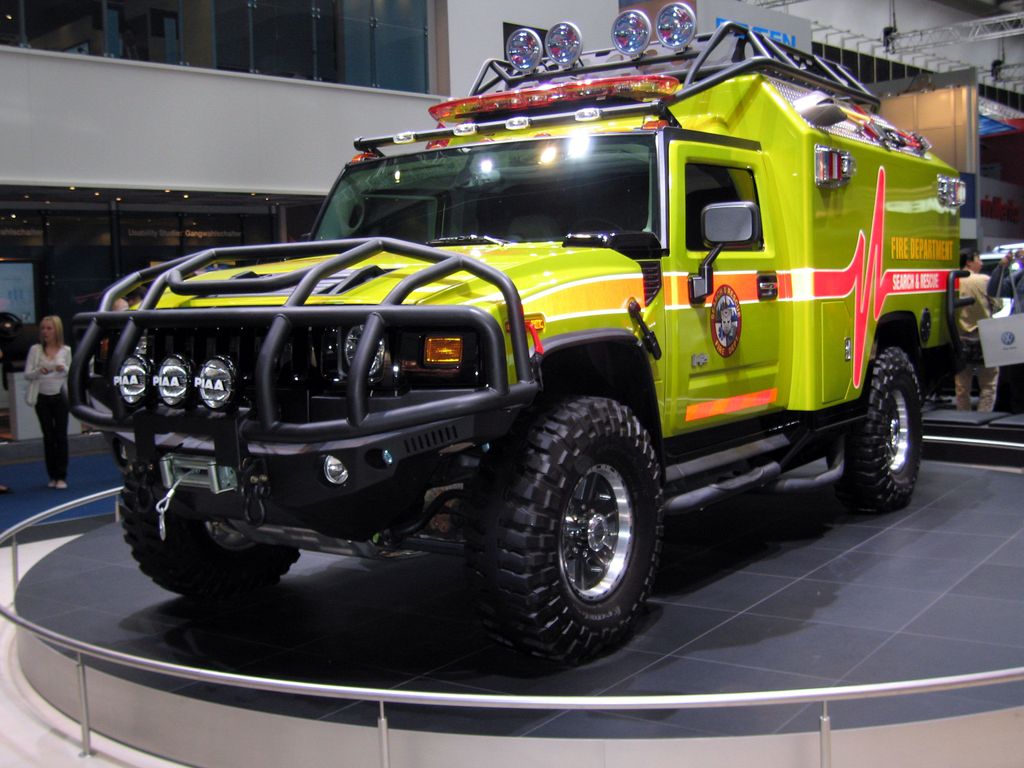
Have you ever looked at a classic car and wondered, “Who actually drove that?” Or, more pointedly, “Why would anyone drive that today?” Well, you’re not alone! There’s a fascinating chasm forming between what the Baby Boomer generation adored in their vehicles and what Millennials are actively, sometimes even passionately, avoiding. This isn’t just about personal taste; it’s a deep dive into how changing times, economic realities, and technological leaps have redefined what makes a “cool ride.”
The Boomer era, stretching from post-war optimism into rapid technological advancements, gave birth to some truly iconic automobiles. These weren’t just modes of transportation; they were rolling pieces of art, each telling a unique story and embodying the zeitgeist of their time. For many Boomers, these cars command a powerful nostalgic charm, a tangible link to their youth, freedom, and the open road. But fast forward a few decades, and you’ve got Millennials – the first global generation, digital natives who grew up with the internet in their pockets, grappling with slower economic growth, student debt, and a keen eye on practicality and environmental impact.
It’s no surprise, then, that the priorities for a “dream car” have shifted dramatically. While a Boomer might reminisce about a massive V8 engine and plush, sprawling interiors, a Millennial is more likely to prioritize fuel efficiency, integrated modern technology, and a design that’s sleek, not bulky. This generational disconnect isn’t just a quirky observation; it shapes the used car market, influencing which vintage beauties get lovingly restored and which gather dust. Today, we’re taking a joyride through 12 classic Boomer rides that younger generations are simply passing over, and we’ll uncover the compelling reasons why. Let’s buckle up!

1. Chevrolet Monte Carlo: The Personal Luxury Cruiser Left in the Dust
Ah, the Chevrolet Monte Carlo. Produced for decades, from 1970 to 2007, this car was truly a phenomenon, especially throughout the 1970s and 1980s. It wasn’t just a car; it was a statement. Positioned as a popular personal luxury car, it also flexed its muscle car credentials with a range of powerful V8 engines. Boasting a distinctive design characterized by its long, commanding hood, the Monte Carlo seamlessly blended performance with undeniable style, making it a favorite for many Boomers seeking that perfect blend of comfort and power on the open road.
For the Boomer generation, the Monte Carlo represented an era of accessible luxury and performance. It offered a smooth, powerful ride that perfectly suited long cruises, and its sleek lines and comfortable interior made it a point of pride. The car’s prominence in NASCAR history further cemented its legendary status, associating it with American speed and competitive spirit. It truly epitomized a certain kind of automotive aspiration, a vehicle that could be both stylish for a night out and capable enough to turn heads with its engine note.
However, for many Millennials, the Monte Carlo evokes a very different reaction. They often view it through a lens of practicality and modern sensibilities, seeing its considerable bulk as a significant drawback. The large size, which once symbolized luxury and road presence, now translates to cumbersome handling in congested urban environments and challenging parking situations. This perception is further compounded by the car’s notorious fuel inefficiency, a major deterrent for a generation increasingly conscious of both environmental impact and personal finances.
Adding to its woes, the Monte Carlo often suffers from the rather unglamorous label of being an “old man’s car.” While it offered spacious interiors and powerful engine options, elements that *could* be spun as retro cool, these are frequently overshadowed by the practical drawbacks. Millennials, drawn to vehicles that offer better fuel economy, sleeker designs, and integrated modern technology, are quick to pass over this classic. The lackluster handling often associated with its bulky size only reinforces the perception that it’s simply not a suitable fit for today’s driving demands, no matter its storied past.
Car Model Information: 2019 Cadillac Escalade Platinum
Name: Chevrolet Monte Carlo
Manufacturer: Chevrolet
Production: 1969–1987,1994–2007
ModelYears: 1970–1988,1995–2007
Class: Personal luxury car
BodyStyle: coupé
Layout: FR layout
Caption: 2006 Chevrolet Monte Carlo LS
Categories: 1980s cars, 1990s cars, 2000s cars, All Wikipedia articles written in American English, All articles needing additional references
Summary: The Chevrolet Monte Carlo is a two-door coupe that was manufactured and marketed by the Chevrolet division of General Motors. Deriving its name from the city in Monaco, the Monte Carlo was marketed as the first personal luxury car of the Chevrolet brand. Introduced for the 1970 model year, the model line was produced across six generations through the 2007 model year, with a hiatus from 1989 until 1994. The Monte Carlo was a variant of the Pontiac Grand Prix throughout its production.
From 1970 until 1972, the Monte Carlo rode on the unique “A-Special” platform with the Grand Prix, shifting to the standard A-body intermediate chassis from the 1973 through 1977 model years. For 1978, the Monte Carlo line underwent downsizing, but was still considered a midsized coupe. The rear-wheel drive A-body platform of this generation of Monte Carlo was redesignated as the G-body when GM’s front-wheel drive A-body cars were introduced for the 1982 model year. After an abbreviated 1988 model year, the Monte Carlo was replaced by the two-door Chevrolet Lumina.
For the 1995 model year, the Monte Carlo was revived, replacing the two-door Lumina. It shared the front-wheel drive W-platform with the two-door Grand Prix, and was the largest coupe in the Chevrolet lineup. After the 2002 model year, the Grand Prix coupe was discontinued, the Monte Carlo became the largest two-door model produced by an American auto manufacturer.
In response to declining sales of the model line, Chevrolet discontinued the Monte Carlo after the 2007 model year. During much of its production, the Monte Carlo represented the Chevrolet brand in stock car racing. During the 1980s, the Monte Carlo SS was introduced, featuring aerodynamically enhanced styling; as part of its revival, the Monte Carlo again represented Chevrolet in stock car racing from 1995 through its discontinuation.
Get more information about: Chevrolet Monte Carlo
Buying a high-performing used car >>>
Brand: Chevrolet Model: Monte Carlo
Price: $37,811 Mileage: 84,091 mi.
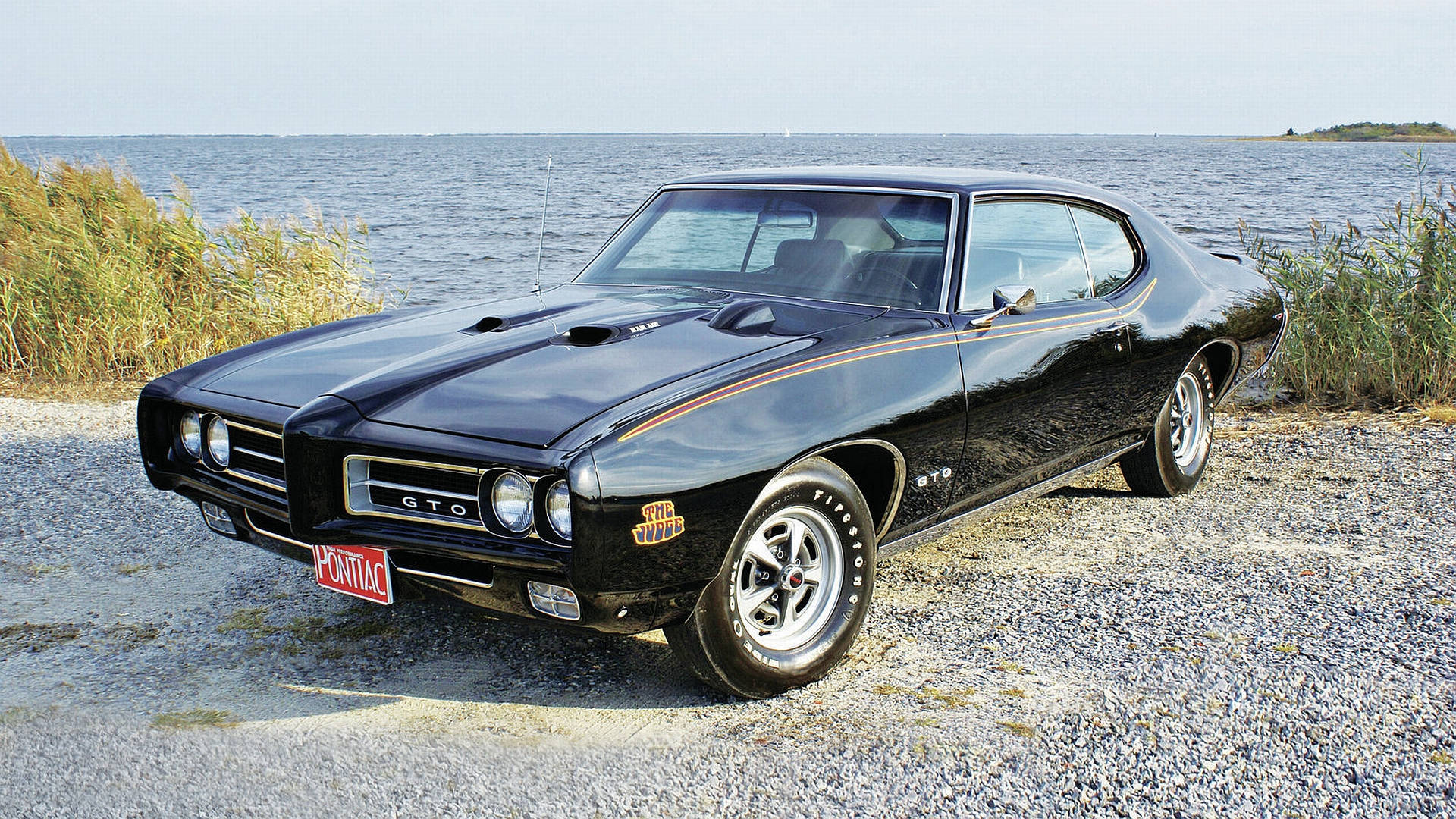
2. Pontiac Firebird: The Screaming Chicken That Can’t Catch a Millennial
The Pontiac Firebird, produced from 1967 to 2002, is nothing short of a muscle car icon. Just mention “Trans Am” to any Boomer, and you’re likely to conjure images of high-speed chases and Burt Reynolds in “Smokey and the Bandit.” This cinematic fame, alongside its powerful engines ranging from robust inline-sixes to roaring V8 powerhouses, cemented the Firebird’s place in automotive history. Its striking design elements, not least the legendary “screaming chicken” hood decal, made it a true head-turner and a symbol of raw American performance and undeniable style.
For the Boomer generation, the Firebird wasn’t just a car; it was an extension of their youthful rebellion and a symbol of freedom. It offered thrilling acceleration and a distinctive roar that announced its presence long before it arrived. Celebrating its appearances in numerous films and TV shows throughout the ’70s and ’80s, the Firebird, particularly its Trans Am variant, became an undisputed boomer icon. It represented an era where horsepower was king, and design was bold and unapologetic, embodying a spirit of exhilaration and pure driving excitement.
However, when Millennials look at the Pontiac Firebird today, a different set of priorities comes into focus, often leading them to simply overlook this classic. The technology onboard is undeniably dated, a stark contrast to the touchscreen interfaces and advanced driver-assist systems they’ve grown up with. Furthermore, the Firebird, like many vintage performance cars, often comes with higher maintenance costs – a significant hurdle for a generation often burdened by financial constraints.
Millennials are increasingly drawn to newer sports cars that offer a more refined driving experience, superior fuel efficiency, and a host of modern amenities that the Firebird simply can’t provide. While its raw performance and classic design could, in theory, appeal to younger enthusiasts, these positives are frequently overshadowed by the practical drawbacks. There’s a perceived lack of sophistication and refinement in the Firebird compared to its contemporary counterparts, making it less attractive to a generation that values a balanced blend of performance, technology, and everyday usability.
Car Model Information: 1983 Pontiac Firebird Trans Am 2D Coupe
Name: Pontiac Firebird
Caption: The second, third, and fourth generations of,the Pontiac Firebird Trans Am
Manufacturer: Pontiac (automobile)
Production: February 23, 1967 – August 30, 2002
ModelYears: 1967 – 2002
Class: Pony car,Muscle car
Platform: GM F platform
Related: Chevrolet Camaro
Layout: Front engine, rear-wheel-drive layout
Categories: 1970s cars, 1980s cars, 1990s cars, 2000s cars, All articles with dead external links
Summary: The Pontiac Firebird is an American automobile built and produced by Pontiac from the 1967 to 2002 model years. Designed as a pony car to compete with the Ford Mustang, it was introduced on February 23, 1967, five months after GM’s Chevrolet division’s platform-sharing Camaro. This also coincided with the release of the 1967 Mercury Cougar, Ford’s upscale, platform-sharing version of the Mustang.
The name “Firebird” was also previously used by GM for the General Motors Firebird series of concept cars in the 1950s.
Get more information about: Pontiac Firebird
Buying a high-performing used car >>>
Brand: Pontiac Model: Firebird
Price: $22,991 Mileage: 38,257 mi.
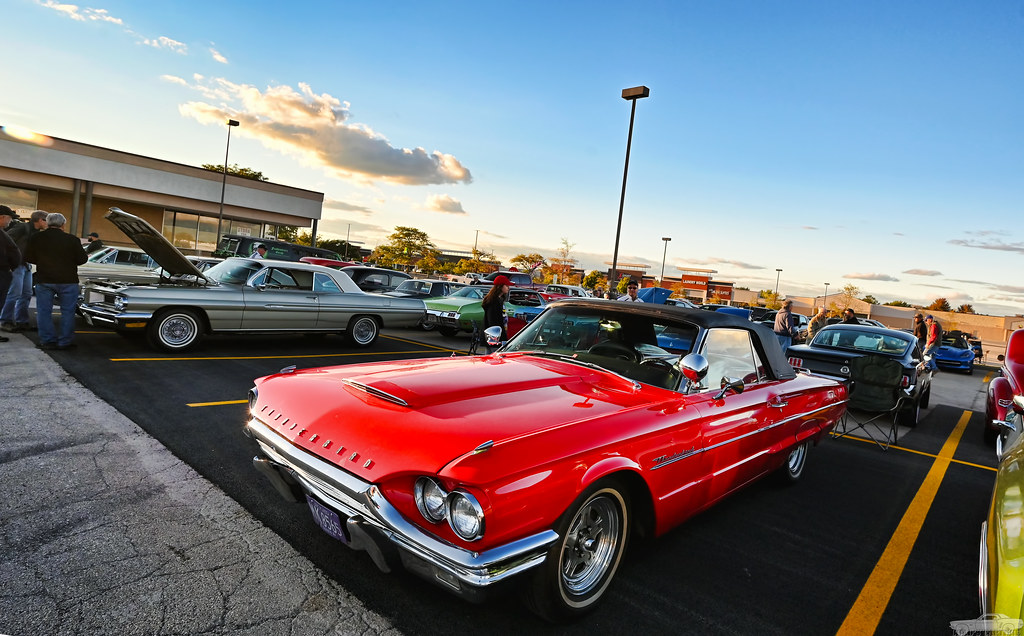
3. Ford Thunderbird: The Elegant Cruiser That Feels Out of Time
The Ford Thunderbird, a nameplate that graced showrooms from 1955 all the way to 2005, enjoyed a long and varied life, evolving significantly over its impressive production run. It began its journey as a sleek, two-seat sports car, quickly becoming a symbol of American automotive elegance and flair. Over the decades, it transformed into a luxurious cruiser, yet it was the 1950s and 1960s models, with their powerful V8 engines and undeniably sleek, stylish designs, that truly captured the hearts of the Boomer generation. These early Thunderbirds embodied a perfect blend of style, comfort, and performance, standing out as a true icon of their era.
For Boomers, the Thunderbird wasn’t just a car; it was a lifestyle statement. The smooth ride and precise handling offered a driving experience that was both sophisticated and enjoyable. Its spacious interior, particularly in later models, added to its allure as a grand touring machine. Whether it was the iconic porthole windows or the distinctive fins, the Thunderbird exuded a sense of prestige and freedom, a car that perfectly suited weekend getaways or simply cruising down Main Street, turning every journey into an occasion.
However, the very charm that appeals to older generations often serves as a significant deterrent for Millennials. They tend to view the Thunderbird as, quite frankly, a car for older generations. This perception isn’t entirely unfounded, given its long history and evolution away from its initial sporty roots. The lack of modern technology is a glaring issue for a generation that expects seamless connectivity and advanced safety features as standard. Features like blind-spot monitoring or contemporary infotainment systems are entirely absent, making the driving experience feel decidedly analogue in a digital world.
Perhaps the most significant hurdle for the Thunderbird in the eyes of Millennials is its inherent lack of fuel efficiency, a practical consideration that weighs heavily on their purchasing decisions. While its classic design and powerful engines still hold a certain aesthetic appeal, these are largely overridden by concerns about running costs and environmental impact. Even later iterations, like the fifth-generation, are criticized for lacking the sporty essence of their predecessors, being seen more as personal luxury cars with less performance focus, which further diminishes their appeal to a generation seeking more dynamic and economical options.
Car Model Information: 2003 Ford Thunderbird
Name: Ford Thunderbird
Caption: 1957 Thunderbird
Manufacturer: Ford Motor Company
Production: unbulleted list
ModelYears: unbulleted list
Class: unbulleted list
Layout: Front-engine, rear-wheel drive layout
Categories: 1960s cars, 1970s cars, 1980s cars, 1990s cars, 2000s cars
Summary: The Ford Thunderbird is a personal luxury car manufactured and marketed by Ford Motor Company for model years 1955 to 2005, with a hiatus from 1998 to 2001.
Ultimately gaining a broadly used colloquial nickname, the T-Bird, the model was introduced as a two-seat convertible, subsequently offered variously in a host of body styles including as a four-seat hardtop coupe, four-seat convertible, five-seat convertible and hardtop, four-door pillared hardtop sedan, six-passenger hardtop coupe, and five-passenger pillared coupe, before returning in its final generation, again as a two-seat convertible.
At its inception, Ford targeted the two-seat Thunderbird as an upscale model. The 1958 model year design introduced a rear seat and arguably marked the expansion of a market segment that came to be known as personal luxury cars, positioned to emphasize comfort and convenience over handling and high-speed performance.
Get more information about: Ford Thunderbird
Buying a high-performing used car >>>
Brand: Ford Model: Thunderbird
Price: $14,500 Mileage: 49,430 mi.
Read more about: The Golden Age of Chrome and Power: 15 Iconic American Cars That Defined the 1950s
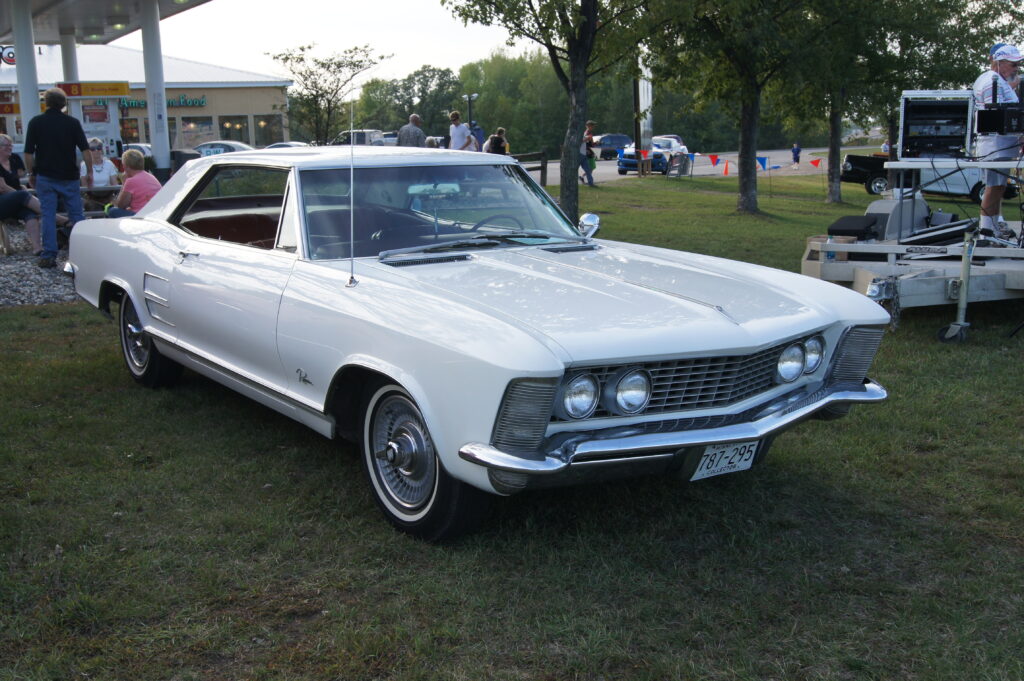
4. Buick Riviera: A Bold Luxury Statement Too Big for Modern Tastes
The Buick Riviera, produced from 1963 to 1999, holds a special place in the hearts of many Boomers, and for good reason. This was a car renowned for its luxurious features and distinctive styling, particularly the striking “boat-tail” models of the early 1970s. With powerful V8 engines under the hood and an unwavering focus on passenger comfort, the Riviera was more than just an automobile; it was a bona fide status symbol of its time. Its daring design and smooth, cushioned ride made it a standout, embodying a certain kind of American automotive opulence that was deeply admired.
The Riviera’s interior was a sanctuary of comfort, often featuring plush seating and refined appointments that made every journey feel like a first-class experience. It was the kind of car you’d take on a cross-country trip without a second thought, confident in its ability to deliver a smooth and powerful ride. For Boomers, this represented the pinnacle of what a personal luxury coupe could be: a vehicle that combined bold aesthetics with a commanding road presence, all while cosseting its occupants in lavish surroundings. Its unique design was a testament to automotive artistry, appreciated for its distinctive flair.
However, for the Millennial generation, these very characteristics often become significant drawbacks. The Riviera’s large size, which once contributed to its luxurious presence, now makes it impractical for navigating tighter city streets and fitting into smaller parking spaces. This substantial footprint, combined with its powerful V8 engines, inevitably leads to considerable fuel inefficiency – a major concern for Millennials who prioritize economical and environmentally friendlier transportation. The thought of constantly filling up a large tank at today’s prices is simply not appealing.
Furthermore, the specialized nature and age of such a luxury classic often translate into higher maintenance costs, another practical issue that deters younger buyers. While its classic design and opulent features could theoretically appeal to those with a penchant for vintage aesthetics, the stark reality of its practicality issues tends to win out. Millennials often view it as an outdated gas-guzzler with a design that might be considered “too bold” or even ostentatious for their more understated and efficient tastes, leaving this luxurious classic largely overlooked in today’s automotive landscape.
Car Model Information: 1971 Buick Riviera
Caption: 1963 Buick Riviera
Name: Buick Riviera
Predecessor: Buick Super
Manufacturer: Buick
ModelYears: 1963–1993,1995–1999
Class: Personal luxury car
Categories: 1960s cars, 1970s cars, 1980s cars, 1990s cars, All articles with specifically marked weasel-worded phrases
Summary: The Buick Riviera is a personal luxury car that was marketed by Buick from 1963 to 1999, with the exception of the 1994 model year.
As General Motors’ first entry into the personal luxury car market segment, the Riviera was highly praised by automotive journalists upon its high-profile debut. It was a ground-up design on a new GM E platform debuting for the 1963 model year and was also Buick’s first unique Riviera model.
Unlike its subsequent GM E platform stablemates, the Oldsmobile Toronado and Cadillac Eldorado, the Riviera was initially a front engine/rear-wheel drive platform, switching to front-wheel drive starting with the 1979 model year.
While the early models stayed close to their original form, eight subsequent generations varied substantially in size and styling. A total of 1,127,261 Rivieras were produced.
The Riviera name was resurrected for two concept cars that were displayed at auto shows in 2007 and in 2013.
Get more information about: Buick Riviera
Buying a high-performing used car >>>
Brand: Buick Model: Riviera
Price: $22,499 Mileage: 91,150 mi.
Read more about: Unmasking the Automotive Paradox: 15 “Classic” Cars You’d Expect to Be Priceless But Are Actually Worth Almost Nothing

5. Cadillac Eldorado: The Excessive Icon Millennials Can’t Justify
From 1952 to 2002, the Cadillac Eldorado reigned supreme as a quintessential symbol of American luxury and unparalleled opulence. For the Boomer generation, owning an Eldorado was more than just having a car; it was a powerful statement of success, affluence, and refined taste. Featuring massive V8 engines that offered an effortlessly smooth ride and plush interiors adorned with the finest materials, the Eldorado was consistently a favorite among affluent buyers. It was cherished for its sheer opulence and the supreme comfort it delivered, making every journey feel like a grand occasion.
The Eldorado’s presence on the road was undeniable. Its long, flowing lines and expansive chrome accents commanded attention, embodying a golden era of automotive design where bigger often meant better. Inside, passengers were enveloped in a world of luxury, with soft leather, deep pile carpeting, and every conceivable convenience for its time. It represented the pinnacle of American automotive engineering focused on comfort and prestige, a true testament to the “land yacht” philosophy that many Boomers admired and aspired to own. This car was built for cruising, designed to glide effortlessly, making its occupants feel truly special.
However, for the Millennial demographic, the very attributes that made the Eldorado a legend are precisely what make it a difficult, if not impossible, choice today. Its enormous size, once a symbol of grandeur, now represents an impractical behemoth in an age of increasingly compact and agile vehicles. Navigating urban environments or even suburban parking lots becomes a cumbersome challenge, far removed from the ease Millennials expect from their daily drivers. This gargantuan footprint directly contributes to its notoriously poor fuel economy, a significant red flag for a generation acutely aware of both the environmental impact of their choices and the rising costs of fuel.
Moreover, the high maintenance costs associated with such a specialized, large, and older luxury vehicle present a major financial hurdle. While its classic design, supremely luxurious interiors, and powerful engines might hold a certain nostalgic or aesthetic appeal, these are largely overshadowed by the practical drawbacks. The Cadillac Eldorado, in its sheer excess, clashes fundamentally with Millennial values of environmental consciousness, efficiency, and practicality, making it a compelling piece of automotive history that remains, sadly, largely overlooked by younger generations.
Car Model Information: 1976 Cadillac Eldorado Convertible
Caption: 1963 Cadillac Eldorado Convertible
Name: Cadillac Eldorado
Manufacturer: Cadillac
Production: 1952–2002
Layout: Front-engine, rear-wheel-drive layout
Aka: Cadillac Fleetwood Eldorado
Class: Personal luxury car
Successor: Cadillac CTS
Categories: 1960s cars, 1970s cars, 1980s cars, 1990s cars, 2000s cars
Summary: The Cadillac Eldorado is a luxury car manufactured and marketed by the Cadillac Motor Car Division of General Motors from 1952 until 2002, over twelve generations.
The Eldorado was at or near the top of the Cadillac product line. The original 1953 Eldorado convertible and the Eldorado Brougham models of 1957–1960 had distinct bodyshells and were the most expensive models offered by Cadillac during those years. The Eldorado was never less than second in price after the Cadillac Series 75 limousine until 1966. Beginning in 1967, the Eldorado retained its premium position in the Cadillac price structure, but was manufactured in high volumes on a unique, two-door personal luxury car platform.
The Eldorado carried the Fleetwood designation from 1965 through 1972, and was seen as a modern revival of the pre-war Cadillac V-12 and Cadillac V-16 roadsters and convertibles.
Get more information about: Cadillac Eldorado
Buying a high-performing used car >>>
Brand: Cadillac Model: Eldorado
Price: $29,499 Mileage: 31,898 mi.

6. Lincoln Continental Mark IV: Opera Windows and Oversized Dreams
The Lincoln Continental Mark IV, produced between 1972 and 1976, stands as a magnificent example of personalized American luxury from its era. This car was instantly recognizable for its truly distinctive design, most notably featuring the iconic opera windows and an impressively long, sleek body that exuded sophistication and power. Beneath that commanding hood lay a formidable 460 cubic inch V8 engine, delivering a ride that was both smooth and incredibly powerful. For many Boomers, the Mark IV represented the epitome of automotive prestige, a vehicle that combined lavish comfort with an unmistakable presence, making it a dream car for many.
Stepping inside the Lincoln Continental Mark IV was like entering a private, opulent lounge. Its interior was a masterclass in luxury, meticulously crafted with high-quality materials, plush seating, and all the amenities one could desire in the early to mid-70s. The unique styling, from its commanding grille to its intricate details, ensured that this car turned heads wherever it went. It was a vehicle designed for those who appreciated understated grandeur and a serene driving experience, a true embodiment of the personal luxury segment that flourished during this period. The Mark IV wasn’t just driven; it was experienced.
Yet, despite its undeniable vintage charm and historical significance, the Lincoln Continental Mark IV largely fails to capture the imagination of the Millennial generation. The very characteristics that defined its luxury and presence in the 1970s are now seen as significant disadvantages. Its massive size, while offering a spacious interior, translates into a car that is unwieldy and challenging to maneuver in modern urban landscapes. Parking becomes an exercise in frustration, and the sheer footprint of the vehicle feels out of place in today’s more compact world.
Car Model Information: 2023 Buick Envision Preferred
Manufacturer: Lincoln Motor Company
Caption: 1975 Continental Mark IV
Name: Mark IV
Production: 1971–1976
ModelYears: 1972–1976
BodyStyle: coupe
Layout: Front-engine, rear-wheel-drive layout
Engine: 460 cuin
Abbr: on
Assembly: Wixom Assembly,Wixom, Michigan
Transmission: Ford C6 transmission
Predecessor: Lincoln Continental Mark III
Wheelbase: 120.4 in
Length: 228.1 in
Width: 79.8 in
Height: 53.5 in
Weight: convert
Successor: Lincoln Continental Mark V
Related: Ford Thunderbird (sixth generation)
Categories: 1970s cars, All Wikipedia articles needing clarification, Articles with short description, Cars discontinued in 1976, Cars introduced in 1972
Summary: The Continental Mark IV is a personal luxury car that was marketed by the Lincoln division of Ford Motor Company from the 1972 to 1976 model years. The third generation of the Mark series, the Mark IV grew in size over its Continental Mark III predecessor. As with the previous generation, the Mark IV saw little direct competition in the American marketplace, competing nearly exclusively against the Cadillac Eldorado (redesigned for 1971).
As with the Mark III, the Mark IV shared its chassis with the Ford Thunderbird, with the Mark IV receiving its own bodywork below the windows. Hidden headlights and a faux Rolls-Royce chrome grille were retained, and a Continental spare tire trunklid. For 1976, the Designer Series option package was introduced; in what would become a tradition for the Mark series (and later Lincoln), the option consisted of specially coordinated exterior and interior trims developed between Lincoln and contemporary fashion designers.
Ford assembled the Continental Mark IV at its Wixom Assembly Plant in Michigan) facility alongside the Ford Thunderbird and the Lincoln Continental. For 1977, the Mark IV underwent a substantial revision, becoming the Continental Mark V.
Get more information about: Lincoln Continental Mark IV
Buying a high-performing used car >>>
Brand: Lincoln Model: Continental Mark IV
Price: $20,221 Mileage: 46,554 mi.
Perhaps the biggest strike against the Mark IV for Millennials is its notoriously poor fuel economy, a direct consequence of its immense V8 engine and substantial weight. In an age where efficiency is paramount, a car that consumes fuel at such a rate is simply not a practical or responsible choice. This, coupled with the perception that it’s inherently a “car for older generations,” and the inevitable higher maintenance costs associated with a vintage luxury vehicle, severely limits its appeal. While its luxurious interior and unique styling might catch the eye, the practical drawbacks and misalignment with contemporary values mean that this majestic cruiser is, unfortunately, often passed over by younger buyers.

